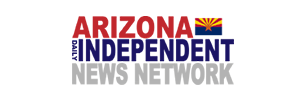
Under Arizona Revised Statutes, ARS 1-602, commonly known as the parents bill of rights, those parental rights are enumerated. The first such right mentioned has to do with education:
1. “The right to direct the education of the minor child.”
However, prior to 2022, most parents could not afford to exercise that right fully. That was the year when The Arizona legislature expanded Empowerment Scholarship Accounts (ESA) eligibility to all Arizona residents who are eligible to enroll in an Arizona public school. That expansion has empowered most parents to exercise a choice between government schools and other choices, including private schools.
During the three years following the ESA expansion, many individuals and organizations have reported on what has been going on with ESA’s. One such organization is the Common Sense Institute Arizona, who describe their advocacy policy as follows:
As a non-partisan 501(c)(3), CSI consciously does not engage in direct advocacy. The policy research we produce is founded upon the desire to break through the divisive partisanship overwhelming issues, and provide fact based economic analysis not otherwise presented to opinion leaders and voters. Producing common sense research helps in educating and informing policy debates, and by not taking a position it allows the research to stand on its own.
On October 3, the Common Sense Institute released its ESA report for the third quarter of 2025. Here are some highlights from that report.
ESA Enrollment
As of September 15, enrollment in the ESA program was 92,362, a 19% increase over last year’s enrollment of 77,496. By the end of 2025, total enrollment may be slightly over 100,000.
Most of that growth has been the result of declined enrollment in government schools (mostly district schools) and reduced participation in STO programs.
ESA Costs
The cost of the ESA program is estimated to reach 1 billion dollars by the end of the year. That is about 9.7% of the 10.3 billion estimated total K-12 cost.
Of the 1-billion-dollar ESA expenditure, about half, 567 billion dollars, are attributable to universal enrollment. The other half, 433 million dollars go to special needs students and would be spent even if we did not have universal enrollment.
While only 19% of ESA students are special needs, they consume nearly half of the ESA expenditures.
Savings Elsewhere
The state is on pace to save 800 million dollars this year, primarily from two sources, reduced student enrollment and declining STO use.
Since the pandemic, school district enrollment has fallen by about 50,000 students, partially because of students shifting from district schools to the ESA program.
During the same period, STOs have declined by about 20%, also partially because of students shifting to the ESA program.
Middle-Income households are major recipients of ESAs
About 57% of ESA recipients come from household incomes between $75,000 and $150,000. The other 43% is divided roughly equally between the rich and the poor.

Be the first to comment